What is APJ? What We’ve Accomplished in the last Five Years and Where We’re Going: Robert Campbell x Kataoka Mami
January 25, 2023
Art Platform Japan is a project led by the Agency for Cultural Affairs whose goal is the sustainable development of contemporary Japanese art. In March of 2023, APJ will achieve a major milestone. In the interview below, Robert Campbell, who has successfully spearheaded a campaign to digitize works of classical Japanese literature, talks with Kataoka Mami, chair of the Committee on Contemporary Japanese Art, about the digitization of artifacts in Japanese art museums, translating texts into English, the successes the project has yielded thanks to its ‘three pillars,’ the work that remains, and future goals for the project. (Titles omitted)
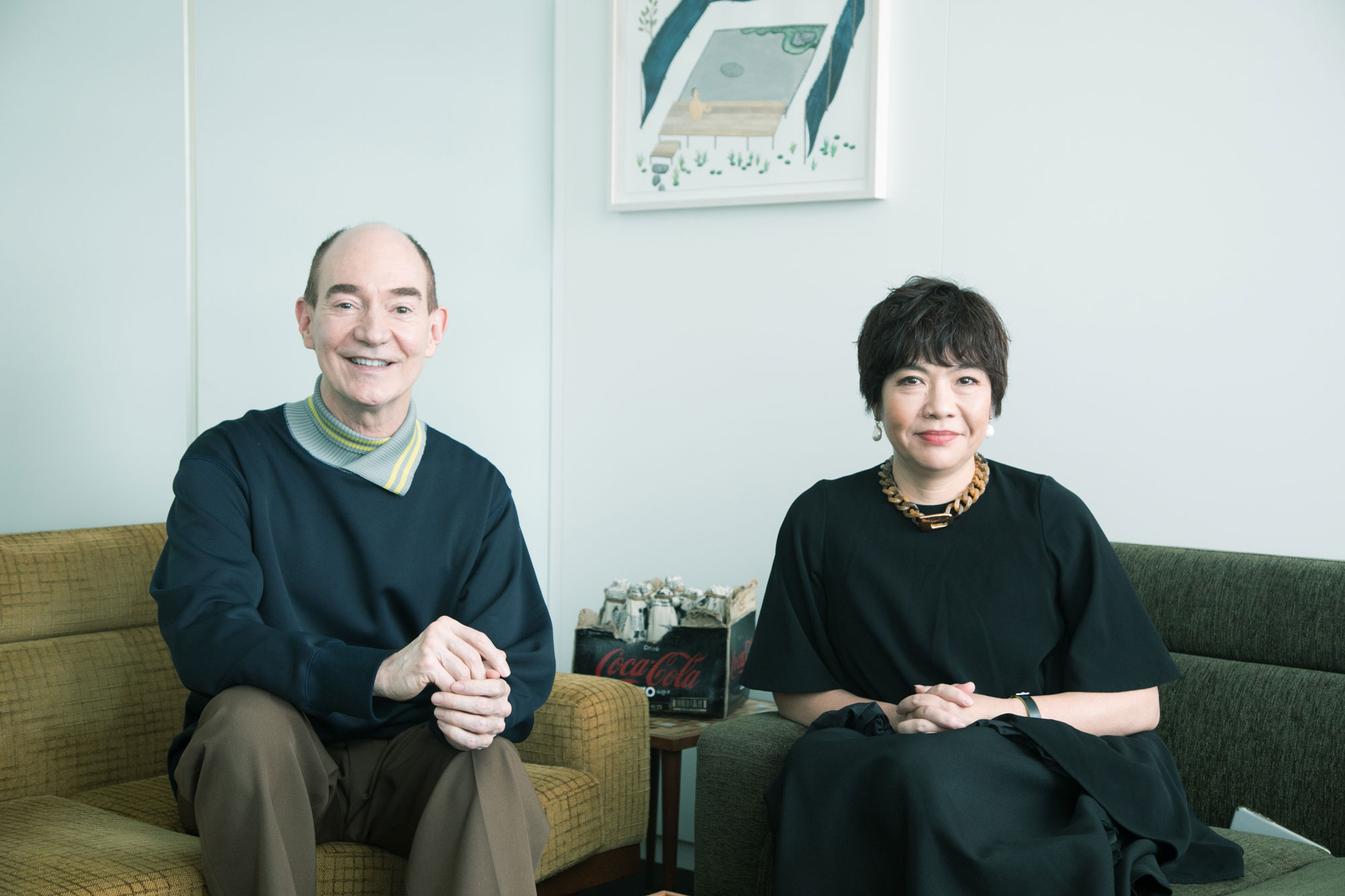
Since 1990, the popularity of contemporary art has exploded in Asian countries
Robert Campbell (below, Campbell): I’ve been a frequent visitor to the Mori Art Museum, but this is the first time I’ve been invited to speak with someone behind the scenes. I’ve been looking forward to our conversation today. How lovely that you can see the Sky Tree from this room. I think one of the main attractions of the Mori Art Museum is how the landscape, which is physically distant, blends in with the works of art presented in front of you, creating a space that makes you feel all kinds of things. That juxtaposition of distance and proximity evokes time, politics, even one’s own physicality, sometimes even putting them at odds with each other.
I understand you were working in contemporary art long before you took up your current position of director at the Mori Art Museum, and had previously been involved in a number of excellent exhibitions. There are so many people and artworks in Japan that give us courage, opportunities, and a different perspective on everyday life. It seems to me that you’ve created a new framework for sharing that kind of contemporary art with the world.
Kataoka Mami (below, Kataoka): Yes, our project, spearheaded by the Agency for Cultural Affairs (Bunkacho), is called Art Platform Japan (APJ). This will be the last year of its five-year timeline. So far, we’ve focused on collecting basic information about contemporary Japanese art, and are making that information available in both Japanese and English.
Campbell: Can you tell us a little about how APJ came about?
Kataoka: The global popularity of contemporary art grew dramatically after 1990, but at the same time, Japan seemed to be fading into oblivion. So it began with a certain sense of crisis over this contradiction. And because contemporary art is closely tied to economic development, it was clear that while the economies of many Asian countries were experiencing rapid growth, Japan’s was shrinking. All of that had an effect on contemporary art. Over recent decades, major biennales were found in China, Korea, and several major cities in Southeast Asia. In 2015, Singapore opened a National Gallery which now houses the large collection of contemporary art in Southeast Asia. And more recently, the highly anticipated M+ opened in Hong Kong. A lot is changing.
Campbell: I’m interested in why contemporary Japanese art is difficult to access on a deeper level.
Kataoka: Yes, that’s true. Art museums are always focused on the immediate task at hand, which is creating exhibitions, and it is not easy to thinking about things from a long-term perspective, like improving the field of contemporary art as a whole. In 2014, the Agency for Cultural Affairs convened a planning meeting to discuss how to promote works of contemporary art abroad, and they began to identify some of the main issues.
This was the first time that any portion of the national budget was allocated to contemporary art. APJ is the platform that grew out of this. Its goal was to increase the value of contemporary Japanese art in the global art field. We wanted to have this be a mid to long-term project, to make sure we were approaching our goals in a sustainable way. There were no simple solutions, but we knew the first thing we needed to do was to create an infrastructure that would connect people to information. This was difficult work that required a slow and steady pace. After five years, we’ve finally begun to see the skeleton. There is still so much to do, but this is a big step.
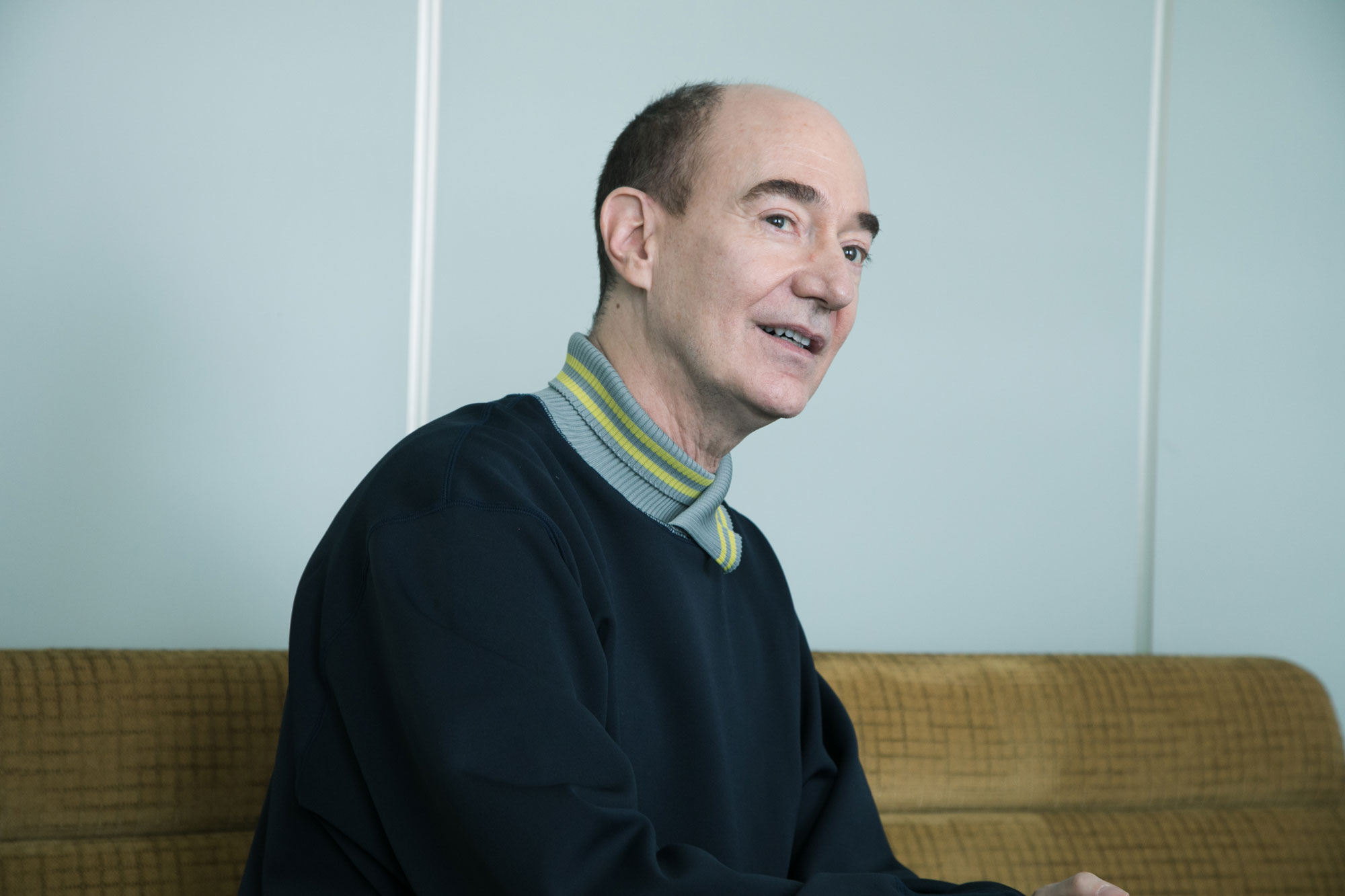 Robert Campbell
Robert Campbell
Activating a Global Database
Campbell: It seems this is the final year of the APJ project. Can you tell us a little about what we can expect to access through the project at this point?
Kataoka: In terms of what the general public can access, we finished setting up our website in March of 2021 (. The website is in both Japanese and English, so people overseas can access the information as well. The two main categories on the site are “Resources” and “Programs.” “Resources” consists of a database SHŪZŌ of artifacts currently housed in Japanese art museums as well as Readings, a selection of bibliographic sources pertaining to postwar art, organized by topic. These have not yet been translated into English, though translated works are also available. The “Programs” section functions as an archive of all the symposiums, webinars, and workshops held by APJ thus far. These are available as video recordings.
Campbell: Does the database tell you where each work of art is housed, in addition to the name?
Kataoka: Yes. Currently we have entries for 147,040 works of art, and the database is also searchable by artist. To date—as of October 18, 2022—we’ve completed entries for 2,170 artists. Every art museum has their own method of cataloging their collections, so when you look at them all side by side, it’s quite overwhelming, and people are unlikely to search the websites of individual museums. Some museums don’t even make all the information publicly available on their website. I think we’ll continue to see more digitization of information, so I think it’s safe to say that creating a database of all the contemporary Japanese art currently held in Japanese museums is a big feat.
Campbell: Can you see images of the artifacts on the site?
Kataoka: We haven’t quite gotten that far, but there are a few entries that include images. We will continue adding more entries as we clear image copyrights for the artworks.
Campbell: I’m looking forward to seeing those. I have some experience creating a database for classical literature. Until last year, I was the Director of the National Institute of Japanese Literature (NIJL), where our goal was to digitize 300,000 pre-Meiji period source texts.
Kataoka: 300,000! Wow, that’s impressive.
Campbell: It was a lot of work, but something I realized after running the project was how a database can be a source of stimulation [for other projects]. The fact that the documents are open-source makes it all the more valuable. We were able to collect materials not only from national and public institutions, but also from powerful private museums, university libraries, and individuals.
In terms of copyright, we’ve been able to make this information available to the public in a way that puts the rights holders at ease, for example by getting a Creative Commons license, including watermarks on images of some of the artifacts, etc. Adding tags and search functions to the database has led to a number of new discoveries, and many interesting projects and exhibits have come out of it as well.
Kataoka: It’s really encouraging to hear how creating the database had a sort of ripple effect on so many other projects. What was going on in the field of classics that made you want to create this kind of database in the first place?
Campbell: Well, one reason is that the documents themselves often go missing. Many works of classical literature actually provide valuable information on disaster preparedness. Since the 2011 Tohoku earthquake and tsunami, there has been a surge of interest in ancient earthquakes. Astronomical events, the movements of the sun, fluctuations in temperature —many records of these measurements have been around since the time of Fujiwara Teika’s Meigetsuki (Diary of the Full Moon), but much of it is still inaccessible. There are probably less than 2000 people in all of Japan who can read the cursive script from that period, so we plan to work on that first. We want to make this information available to everyone so that we can create new fields of knowledge in Japanese Studies and beyond.
Another thing I’m very interested in is the creation of a comprehensive database of cultural resources from the national, community and local levels. Organizations in Europe have been working on projects like this for the last ten years. For example, EU's Europeana database has created a really great source on World War I. To commemorate the hundred-year anniversary of the beginning of World War I, from 2014-2018 they went to over 23 different countries, down to the village level, photographing, collecting, and tagging a variety of cultural resources, creating a repository so that researchers from many different countries and languages can search it.
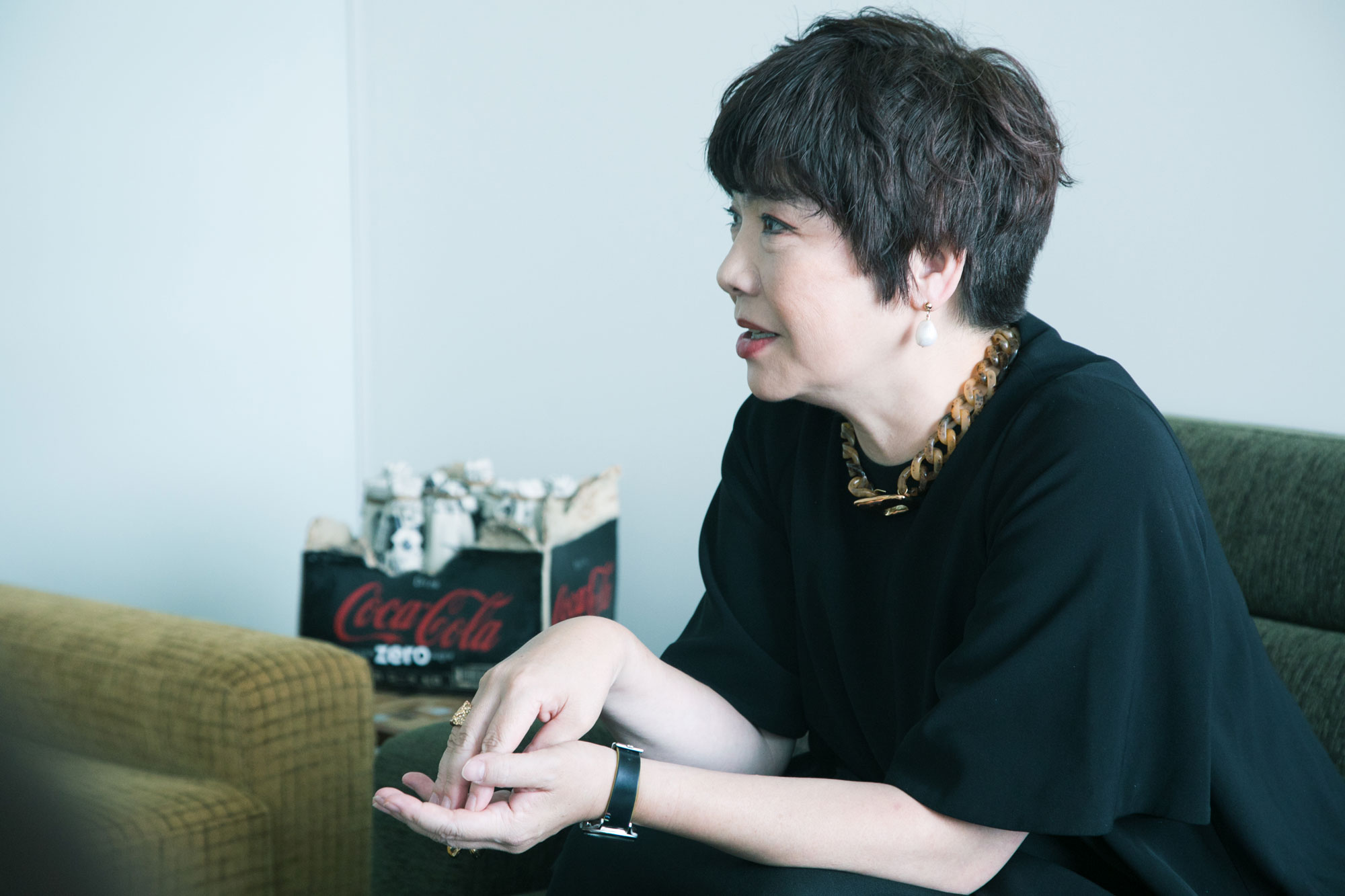 Kataoka Mami
Kataoka Mami
Japanese Art Museums Used to be Very Male-Centric
Campbell: I think it’s important to continually question the utility of projects with sizeable budgets and manpower. At APJ, what do you hope to achieve by synthesizing all this information on works of contemporary art and sharing it in Japan, as well as overseas? I’m asking this question from a slightly skeptical standpoint.
Kataoka: Well, for example the easiest way to promote contemporary Japanese art overseas is to circulate exhibitions in different countries. But the cultural narratives these exhibitions create really depends on who you choose [as the artist]. How do you want to convey information about a particular era or person or society in the exhibition? How do you want people to learn from it? When you consider all of that, I think it’s important to have a foundation of basic information [about contemporary Japanese art] that anyone can access.
Campbell: The contemporary art scene has changed quite a bit since the 1990’s, when we entered the age of multiculturalism. But in the past few years, the tide seems to have turned completely: nationalism is on the rise again, and there’s growing opposition to the idea of globalism. How do you think a database of contemporary art might benefit people beyond the art world? What kind of information or inspiration do you think it can provide them?
Kataoka: I think it’s unlikely the database alone will offer them anything specifically. The database is just a place to organize materials and resources in order to understand contemporary art on a deeper level. But one thing that occurred to me as I was working on it was that majority of the artists were men. I’m sure there were some female artists as well, but it became obvious to me how male-centric the collections in Japanese museums really were.
At the Venice Biennale, which is currently in session, women and nonbinary artists make up over 90% of participants—which set a new record in the history of art. What kinds of stories might emerge when we look back at the history of art from a different perspective? I think this is something that many places around the world are grappling with.
Campbell: Just the process of making visible what previously wasn’t is in itself meaningful. By creating a simple search function, you allow access to many kinds of systems. Are you planning to construct the database in a way that allows for connections to be made across different fields of knowledge, beyond contemporary art?
Kataoka: I want the database to be something that helps people navigate the vast sea of information—to help them understand where they are, and where Japan is. I think looking at the world through diverse perspectives gives you a different perspective on history and society as well. To live in a divided era like ours, where it’s inevitable that different opinions co-exist, it’s important to sympathize with viewpoints different from your own.
The History of Contemporary Japanese Art Led by the Private Sector
Campbell: APJ was an initiative of the Agency for Cultural Affairs, but I think most people have the impression that contemporary art is generated by influential people in the private sector. Artists show their work in galleries, and generally live self-sufficiently and autonomously. Does the fact that the state has chosen to support this project disprove that?
Kataoka: There has to be someone in charge of evaluating new things. Art is difficult to evaluate democratically, and it’s true that contemporary art has historically been driven by the private sector. For example, the Sezon Museum of Modern Art (*Seibu Department Store’s Art Museum. It opened in 1975 at the Seibu Ikebukuro store, and closed in 1999) were paying attention to important artists like Joseph Beuys and Jasper Johns very early on, exhibiting their works Beuys was still alive. Technically, the first time a public art museum used the term ‘contemporary’ was in 1989, at the opening of the Hiroshima Museum of Contemporary Art. But if we go back even further, the first national museum of modern art opened (Tokyo, Kyobashi) in December of 1952, the Ohara Art Museum opened before the war, and the Bridgestone Art Museum (currently the Artizon Art Museum) opened in January of 1952. The construction costs for the National Museum of Modern Art Tokyo, currently located in Takahashi, were donated by the entrepreneur Shōjirō Ishibashi, who founded the Bridgestone Art Museum.
But what APJ has promoted is basic infrastructure for evaluating works of contemporary Japanese art. While this doesn’t immediately translate into economic benefits, it’s still a very important task in terms of Japan’s overall cultural strategy. If we don’t work on this, then the whole thing will not function. In that sense, I think it’s very significant that the Agency for Cultural Affairs took initiative on this project.
Campbell: This isn’t just applicable to contemporary art—it’s also deeply connected to the problem of education. After 1948, Japanese national universities, which are basically corporations now, rapidly established colleges of liberal arts and general education. But while they continued to hire faculty in premodern literature and history departments, the same was not true for humanity discipline, regarding modernity. Most of the faculty who dealt with modern and contemporary topics in aesthetics and art history were lumped together in early level general education divisions. This meant that the modern humanities had only weak connections to cultural history, not to mention that they weren't attracting students. Since the 1980s and 90s, though, they’ve gradually begun to integrate [the classical and contemporary], as you mentioned earlier. Still, even though it is in high schools, part of the public education curriculum, it’s still the case that these topics are rarely given priority. With all the intensity of cramming for exams, many teachers run out of time to teach modernity.
Kataoka: Social phenomena, including their historical aspect, are often reflected in works of contemporary art. For example, contemporary artworks in Southeast Asia and East Asia often deal with stories from the era of Japanese occupation. Of course the history of modern art is closely tied to the processes of colonization, independence, and nation-building that so many countries in Asia went through. So it’s important to have some familiarity with this history. Otherwise it may be difficult to look at this kind of art without flinching.

Campbell: The Japanese education system does a poor job of teaching modern history, and this has had an immediate effect on the general public’s historical consciousness. One of the reasons why citizens often can’t speak intelligibly about their own country’s history is because there hasn’t been any effort to create and foster spaces in which they can exchange views on these matters. It’s so important to be able to orient yourself in history. 。
Kataoka: Yes, I agree. I think you could even say that that’s what contemporary art does. If you are trained to orient yourself in time and space, you can really understand and enjoy these works of art. But how will that be reflected in the education system? I think we need to reexamine what has happened since 1990. Over the last thirty years, we have begun to reevaluate the way that many non-Western regions, including Asia, Africa, and Latin America, independently developed their own modernisms. This is now referred to as ‘multiple modernisms,’ which describes how this development took place simultaneously across multiple places. From there, it became important to have a deeper understanding of the history and development of art in our own country, and to be aware of how we were being positioned in the larger region of Asia. Within Asia, Japan was at the forefront of establishing art museums, but over the past thirty years this position has reversed due to rapid economic development in the rest of Asia, and the promotion of culture and arts there.。
Campbell: Until the 1980’s, Japan was economically advanced, but paradoxically that has now become a hindrance. What influence has this concept of ‘multiple modernisms’ had on the world of contemporary Japanese art?
Kataoka: Well, during the postwar period, in the 1950s and 60s, the Japanese avant-garde art movement rose to international recognition. For a long time it was assumed that this movement was simply an imitation of the ideas coming in from the West. But in fact, much of the ideas in the Japanese avant-garde movement were developed independently in Japan, and it eventually came to be recognized as an interesting resource, even compared to Europe and America. Many works that were languishing in warehouses have now been reappraised at a value of several hundred thousand dollars, and as the value went up in the market, these works became housed in Western museums, and they grew to take on historical importance.
Rectifying the gap in information abroad through the translation of texts
Campbell: How does APJ plan to disseminate this?
Kataoka: One of the main pillars of our project, alongside creating the database, is promoting the English translation of documents related to postwar Japanese art. There are many works of research, criticism and essays by curators, but very few of them have been translated. One of the pillars of APJ is to rectify the gap between information available in Japan and information circulated in English.
Campbell: That’s wonderful. Is there a specific committee dedicated to selecting which works will be translated?
Kataoka: Yes. They’ve established ten themes for choosing works and translating them. The first one they worked on was a very famous book called “Anarchism of the Flesh,” a collection of pieces on trends in 1960’s Japanese performance art edited by Kuroda Raiji. The chronology alone ran over 130 pages. It is an important research document, so the translation was done by a team of translators, and is now publicly available on our website under Book Project.
Campbell: When you look at the “Readings” page, one of the themes listed there is “Photography and Media.” I think one major difference between Japan and the West is that Japanese photographers often write their own texts. This has been a continual feature of print media in Japan since the prewar period and can be seen for example in the photojournalism of pre- and postwar artists like Ihei Kimura. It seems as though essays and theories of culture written by photographers themselves have been well-received in Japan, and have themselves been the object of research and criticism.
Kataoka: Yes, photographers like Takuma Nakahira have written quite a lot of critical essays. They haven’t been translated by APJ yet, but our hope is that valuable materials like these will help deepen the understanding of modern Japanese art.
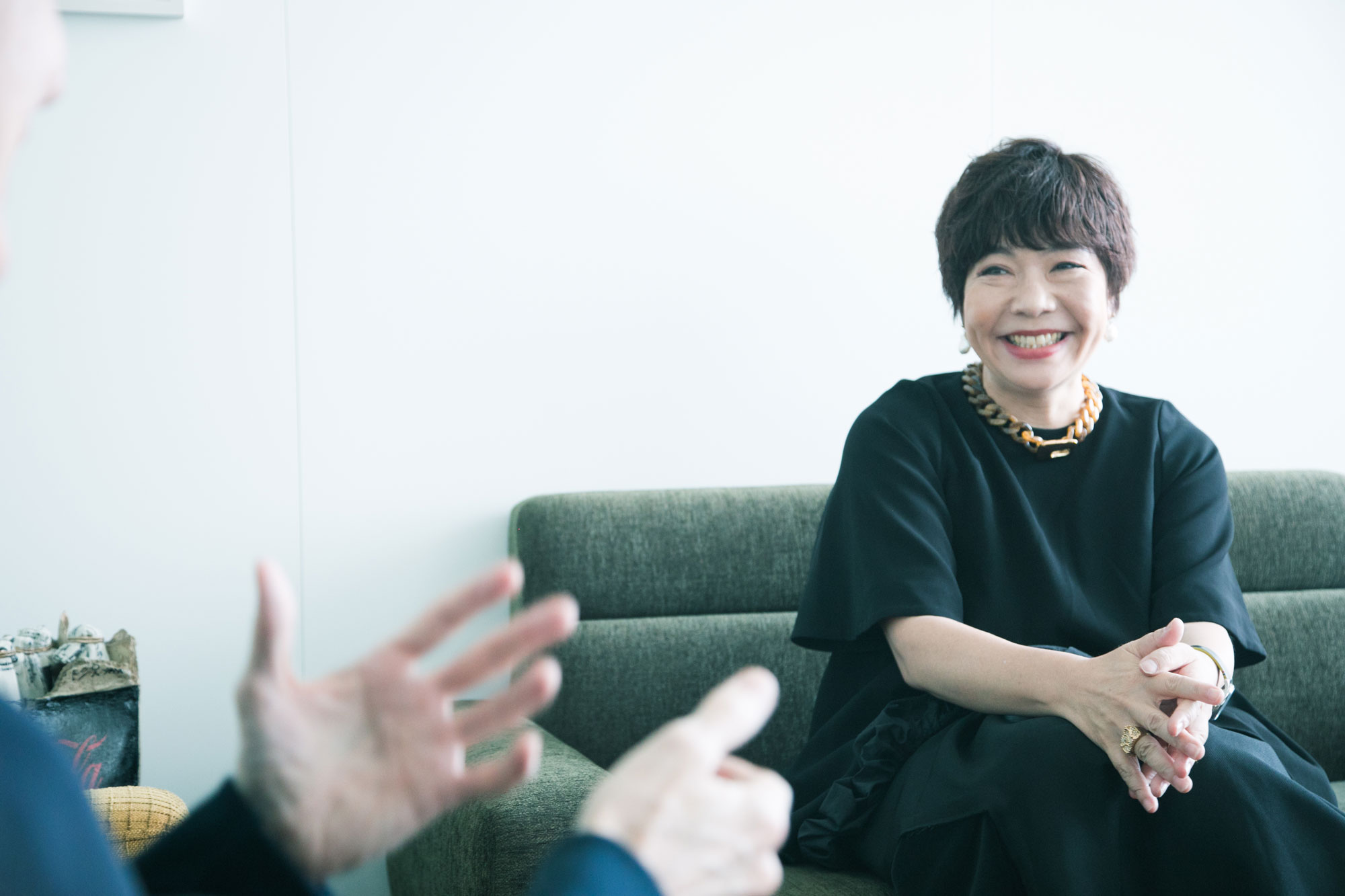
Workshops and Discussions Help Connect People
Campbell: What are some of the long-term goals that APJ is striving toward?
Kataoka: We want the project to be useful to the general public, so in addition to being a source of information, we want it to introduce the artworks themselves, as well as the current state of contemporary art and art museums in Japan. After next year, everything we’ve accumulated at the APJ project will be transferred to the National Art Research Center (tentative name), which is part of the Independent Administrative Institution National Museum of Art that oversees the National Art Museums.
One other thing we’re doing is creating a network where Japanese and overseas art professionals such as curators and scholars can connect with each other. I became a curator in the late 1990’s, and my network naturally expanded over the years as I met other artists and curators of my generation in biennales held in various Asian countries. Curators in other countries don’t necessarily travel around the world and visit Japan regularly, so in order to have foreign curators learn about modern Japanese art, it is important to have them actually visit us here.
Campbell: I think it’s a great thing for authors, in the broadest sense of the word, to hold workshops with lots of different people. For example, at NIJL we created a consortium to connect scholars from all over the world, share sources we think everyone will find interesting, translate and review them together. The International Consortium for Research on Japanese Classics, holds regular seminars online. It’s like sewing one big quilt together: as we work continuously on a project together, it helps create deeper relationships with one another, which leads to people inviting each other to other events.
Kataoka: The APJ workshops are by invite only, but some of the things we’ve done are invite directors of future international biennales, introduce Japanese artists, share the interest of participating curators, and look for opportunities for collaborative projects. Since the coronavirus pandemic, we’ve shared the contents of our discussion online, and made it possible to access our archives online as well. We originally began this workshop in order to connect with people overseas, but eventually we realized it was useful even within a domestic framework. For example, at regional art museums, it’s fairly common for there to be only one curator, usually on the younger side, to be in charge of the contemporary art. Even if they wanted to create an exhibition, they’d have to handle everything themselves, from the planning to shipping the works of art, arranging artist invitations, overseeing the budget, to the administrative work.
Campbell: It seems like translation is a great way to train and support younger scholars. When graduate students and younger curators take on translation projects, they accumulate experience that they can put on their CV. Especially if it’s an institution that can fund researchers through the “Researcher Number” program for example, I think this can lead to opportunities for career advancement. Building incentives for young people into the system can only help strengthen it. Do APJ have particular goals beyond next year?
Kataoka: Right now we are working on transferring all the work that APJ has done over to the National Art Research Center (tentative name).. What you shared today about your projects in the field of literature is very helpful for thinking about how we are actually going to carry this out.
Campbell: I think contemporary art, like fashion, music, and other forms of representative culture has major appeal right now. I think it would be really interesting if this project could collect the many diverse viewpoints that artists incorporate into their works and share these with the public through workshops and reports.
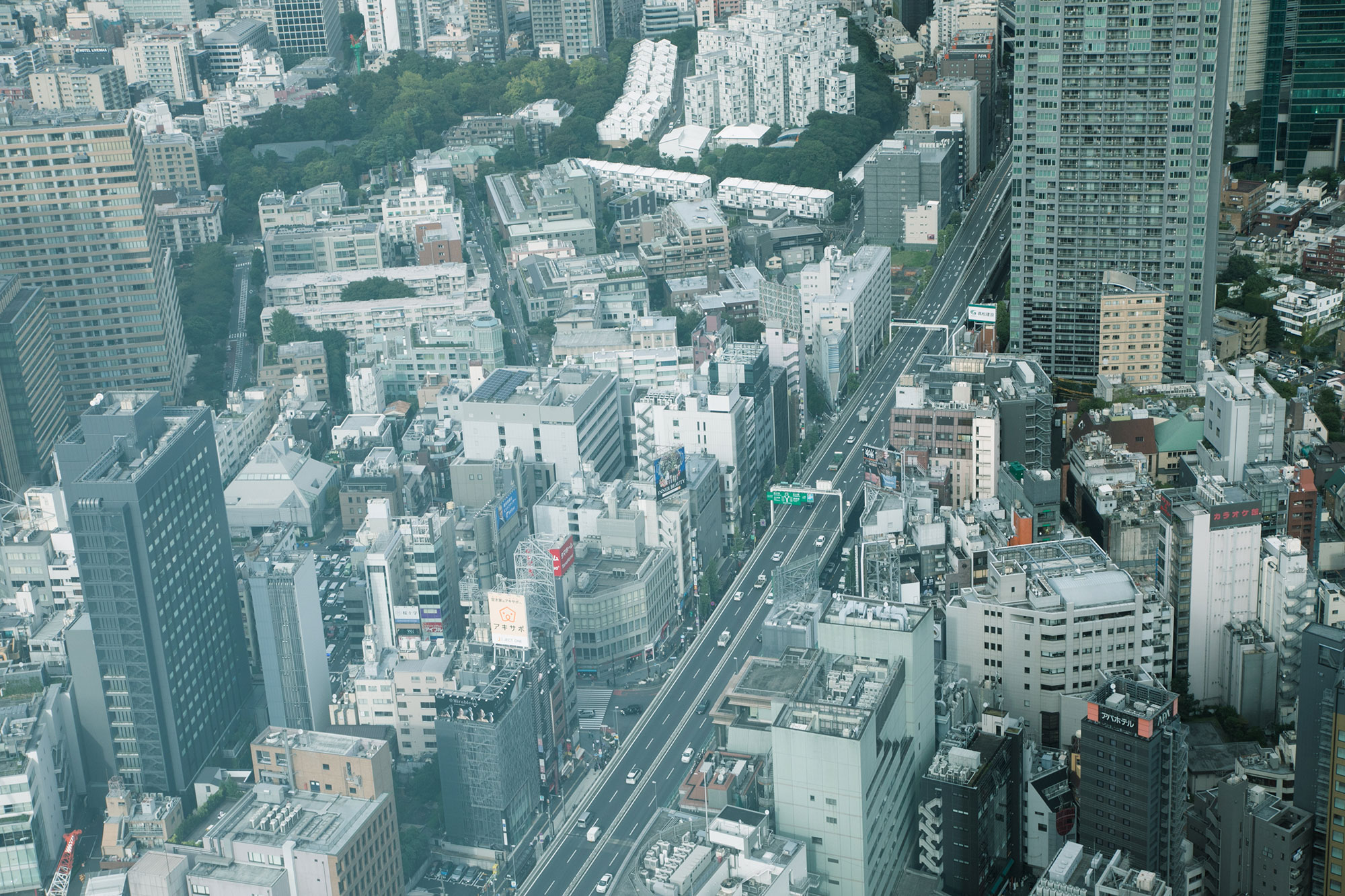
Interlocutor Profiles
Robert Campbell: Japanese literature researcher, President of the National Institute of Japanese Literature
Born in New York. Received his BA from University of California, Berkeley in 1981. Received his PhD from Harvard University in the East Asian Languages and Cultures Program. Moved to Japan in 1985 as a researcher in the Literature Department at Kyushu University. After working as Assistant Professor in the same department, then as Associate Professor at the National Institute of Japanese Literature, in 2000 he became Associate Professor in the Graduate School and College of Arts and Sciences at the University of Tokyo, and since 2007 worked as a professor at the same program. In 2017 he became Director of the National Institute of Japanese Literature. In April of 2021 he joined Waseda University as University professor. He also works as a consultant to the Waseda University International house of Literature (The Haruki Murakami Library). His specialization is in early modern and modern Japanese literature. He is active as a writer and commentator in numerous fields. His most recent work, “Reading Vessels: Japanese Culture through the Masterpieces of Tea Ceremony, Vols. 1 and 2” (Tankosha Publishing) is a compilation of the author’s unique perspectives on everything from national treasures and other important cultural artifacts to works by popular modern authors. Including both writing and photography, this volume is a unique and valuable resource.
Kataoka Mami: Curator, Director of the Mori Art Museum, Chair of the Committee of Contemporary Japanese Art
Since 1992, she has been a researcher in the department of Urban Development at NLI Research Institute, and in 1997 she was appointed as Chief Curator of the Tokyo Opera City Art Gallery. In 2003 she began working for the Mori Art Museum and since 2020 she has also held the position of Director. She has held successive positions as Co-Art Director of the 9th Gwangju Biennale (2012), Artistic Director of the 21st Biennale of Sydney (2018), Artistic Director of Aichi Triennale 2022 (2020-22), and served as President of the International Committee for Museums and Collections of Modern Art (CIMAM) (2020-22). Some of the major exhibitions which she curated are “Ai Weiwei: According to What?” (2009/travelled in the US and Canada 2012-14), “Aida Makoto: Monument for Nothing” (2012), “N.S. Harsha: Charming Journey” (2016), “Chiharu Shiota: The Soul Trembles,” (2019/traveling till 2022), “Another Energy: Power to Continue Challenging— 16 Women Artists from around the World” (2021 / co-curated with Martin Germann) amongst others.
Photos: Hosokura Mayumi
Edit & Text: Goroku Miwa
Translation: Lisa Hofmann-Kuroda
